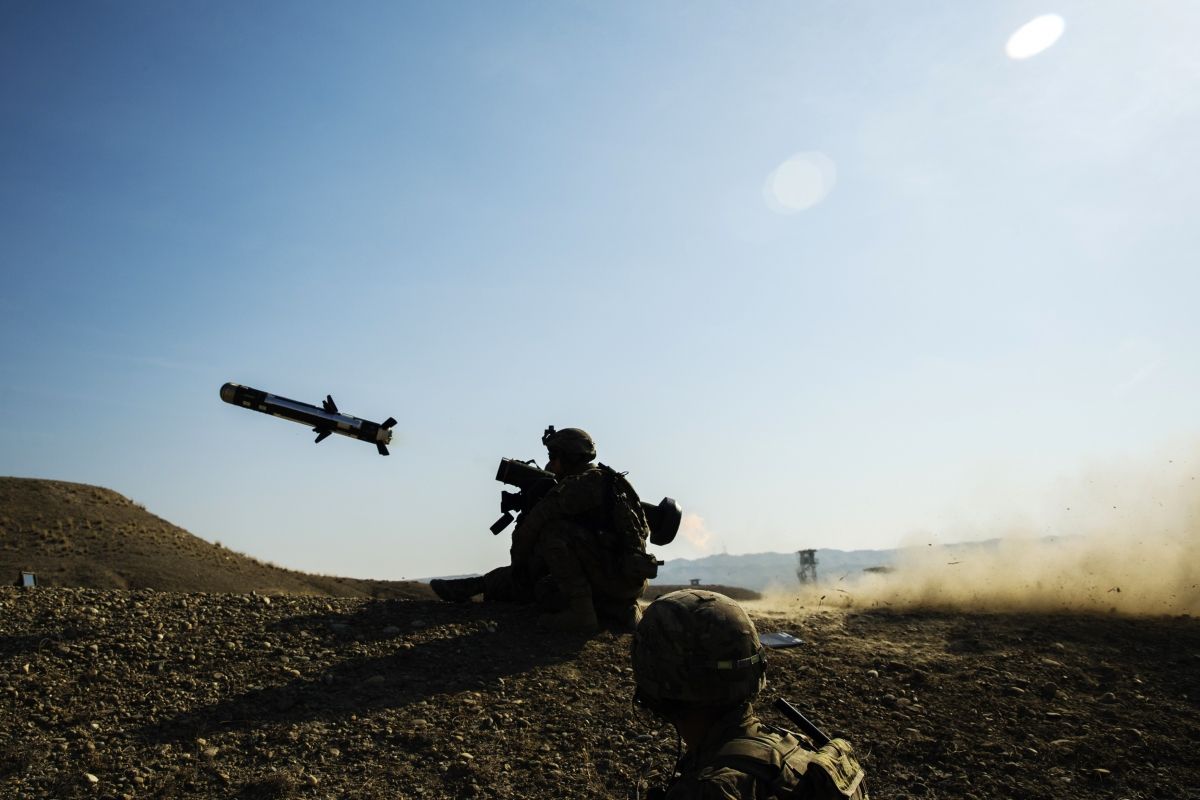
Washington last month decided to send lethal aid to Ukraine to prevent aggression by Russian-led forces. The move is meant to keep the simmering conflict from flaring into a hot war by improving government forces’ ability to defend against possible rebel offensives, WSJ reports.
But the policy is fraught with potential national-security pitfalls, particularly the risk of the weapons ending up on the other side.
U.S. officials say they have carefully considered the dangers, taking particular precautions with Javelin anti-tank missiles the Trump administration is sending.
Those weapons have been designated for units far back from the eastern Ukraine frontline to ensure that Ukraine doesn’t use them for an offensive push and they aren’t lost to the enemy if the fighting shifts.
Read alsoUkraine vows to use U.S.-made ATGMs to respond to Russian provocations in DonbasThey will be stored at training centers. American soldiers, who are now at a base in far western Ukraine but could move to bases in more central parts of the country, will regularly check and count them while training units.
“There is a [training] package that goes along with the weapons that gives people on our side a lot of reassurance that we will be able to keep tabs on them,” said a senior U.S. official.
It’s not a theoretical problem. After the U.S. delivered short-range radar systems to Ukraine in 2014, at least one was deployed to the frontline near the eastern city of Debaltseve to detect the site from which rebels were launching artillery attacks.
Russian-led forces overwhelmed the government troops, who fled and left parts of the radar behind. Pro-Kremlin media triumphantly published pictures of the components in their boxes.
“It was interesting to get a look at the American technology,” said Anton Lavrov, an independent Russian military analyst, referring to the published photos.
Read alsoExpert on U.S. plans to arm Ukraine: "It seems to have worked"A Ukraine military spokesman said it intentionally destroyed parts of the radar system before the withdrawal and immediately informed the U.S. An official close to the Russian defense ministry said the capture was less a military-technology gold mine than a psychological victory and chance for nose-thumbing at U.S. policy.
The problem hasn’t been limited to Ukraine. The U.S. provided aid, including training and equipment, to Georgia during its 2008 conflict with Russia-backed separatists in Abkhazia and South Ossetia, and American-issued equipment was captured on Georgian bases.
The Russian official said that on a trip to Armenia, he met special forces with U.S. gear, including boots, field jackets and knives, which he said he identified from the brands and make. He said they told him they bought it at an informal street market in Tbilisi, the Georgian capital.
A Pentagon spokesman noted that Ukraine and Georgia are required to adopt the same security measures as the U.S. and said it “conducts meticulous evaluations of physical security preparations and capabilities.”
Read alsoGermany’s Gabriel doubts effectiveness of lethal aid to UkraineConflict Armament Research, a group that documents sources of weapons in conflict zones, last month released a report saying the U.S. provided Syrian rebels with arms contributed by North Atlantic Treaty Organization allies, much of it Eastern European surplus, that then made its way into the hands of Islamic State.
Responding to the report, the Pentagon said it was monitoring alleged misuses and would curtail support for rebels if the weapons were lost.
Perhaps most notoriously, the CIA in the 1990s had to buy back Stinger missiles it provided in the 1980s to Afghan Mujahideen fighting the Soviet army, which it has never publicly acknowledged. U.S. officials feared the shoulder-launched missiles could be targeted against commercial jetliners or be used by Taliban forces.
Today, arming rebel groups in Syria or Afghanistan is far different from providing arms to the Ukrainian government, the senior U.S. official said. “Basically things work in Ukraine,” the official said. “It is a totally different thing than an ongoing civil war.”
Keeping Javelins from the frontline also means they will not have a direct impact on the battlefield. U.S. and Ukraine officials say the importance of the weapons is not to push back separatist troops but to strengthen the diplomatic push to settle the conflict.
The Pentagon and State Department have argued that supplying lethal weaponry to Ukraine was the right thing to do and wouldn’t escalate the war. Trump administration officials favoring a harder line on Russia have pushed for more robust support.
U.S. and Ukraine officials say it is critical the Russia-led forces don’t get hold of the Javelin missiles for fear they could be used against Ukrainian tanks
The Russian official indicated the U.S. policy was wise. He suggested militants or Russia could potentially resell them to a conflict zone where they could be used against U.S. personnel.
“I would keep them under lock and key, hundreds of miles from the frontline,” he said.
“Imagine if they get lost,” the Russian official said. “They won’t be used in the same conflict, but could find their way to an American APC [armored personnel carrier] thousands of miles away, as a kind of lesson.”

